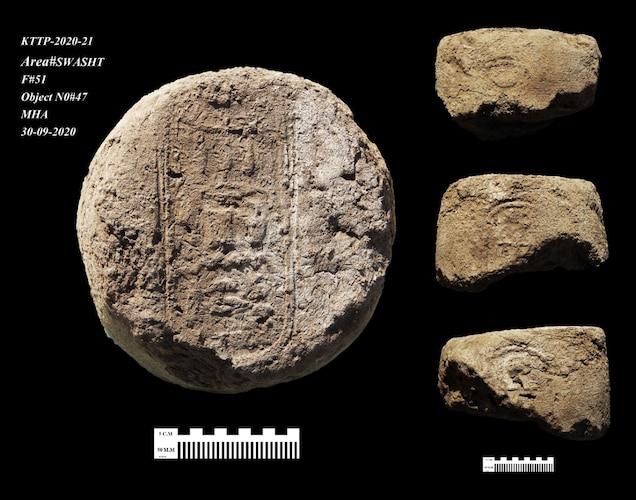Egypt continues to reveal some of its ancient secrets. Archaeologists have announced they have unearthed the Lost Golden City of Pharaoh Amenhotep III in Luxor’s southern province.
The archaeological discovery is already hailed as one of the most significant finds in Egypt.
The 3,000-year-old Golden City dates to the era of Amenhotep III, one of Egypt’s most powerful pharaohs who reigned for almost four decades in the 1300s B.C. The unearthed ancient city, complete with mud brick houses, artifacts is now considered just as important as the discovery of King Tutankhamun’s tomb by Howard Carter in 1922.
An undated handout photo released Thursday, April 8, 2021 by the by the Zahi Hawass Center For Egyptology shows an archaeological discovery as part of the ‘Lost Golden City’ in Luxor, Egypt. The city is 3000 years old, dates to the reign of Amenhotep III, and continued to be used by Tutankhamun and Ay. (by the Zahi Hawass Center For Egyptology via AP)

Credit: Zahi Hawass Center For Egyptology via AP
Archaeologist Zahi Hawass remarked in a statement that many foreigners have searched for the city but never found it. It’s undoubtedly an archaeological breakthrough and discovery of significant historical importance.
The long-lost city that dates back to what is considered a Golden Era of ancient Egypt, the period under King Amenhotep was once the largest administrative and industrial settlement of the pharaonic empire, he added. The city is also known as Aten.

Credit: Zahi Hawass Center For Egyptology via AP
“Last year, archeologists started excavating in the area, searching for the mortuary temple of King Tutankhamun. However, within weeks, the statement said, archeologists found mud bricks formations that eventually turned out to be a well-preserved large city. City walls, and even rooms filled with utensils used in daily life are said to be present,” the Associated Press reports.

Credit: Zahi Hawass Center For Egyptology via AP
“The archaeological layers have laid untouched for thousands of years, left by the ancient residents as if it were yesterday,” the press release said.
“What they unearthed was the site of a large city in a good condition of preservation, with almost complete walls, and with rooms filled with tools of daily life,” Hawass said in the ABC News report. He also added archaeologists have found a residential area and a bakery at the site.

Credit: Zahi Hawass Center For Egyptology via AP
The newly unearthed city is located between King Rameses III’s temple and the colossi of Amenhotep III on the west bank of the Nile in Luxor.
The city continued to be used by Amenhotep III’s grandson Tutankhamun and his successor Pharaoh Ay.
King Tut became a household name and helped renew interest in ancient Egypt when his tomb in the Valley of the Kings was discovered nearly fully intact in 1922.





